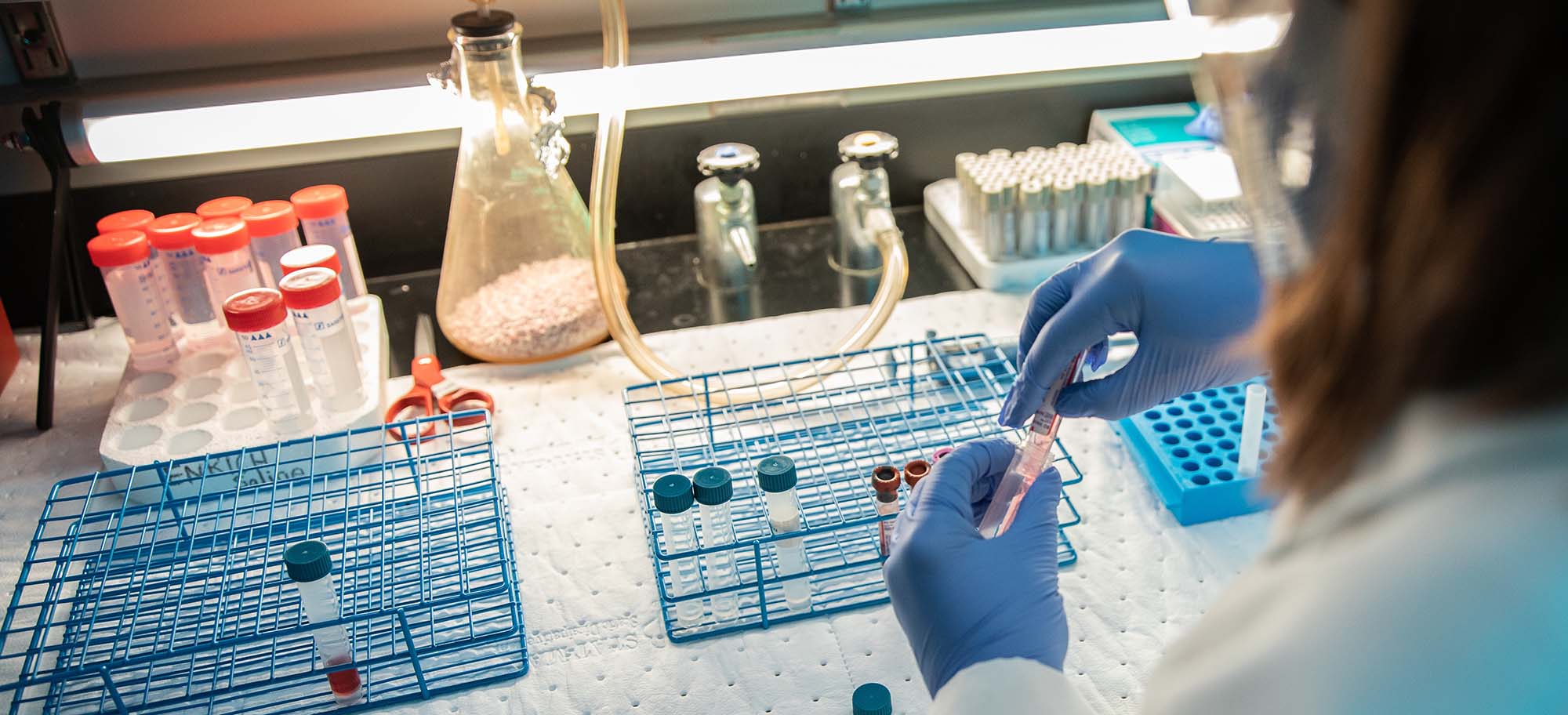Detecting new COVID-19 variants as they start to spread is a massive scientific and logistical challenge.
But thanks to two University of New Mexico scientists who have studied and tracked the spread of SARS-CoV-2 (the virus that causes COVID-19) since the beginning of the pandemic, genomic surveillance is how we knew when the Omicron variant was first brought into New Mexico.
In December 2021, Darrell L. Dinwiddie, PhD, and Daryl Domman, PhD, co-leaders of the SARS-CoV-2 genomic surveillance program at The University of New Mexico Health Sciences Center (supported by the National Institute of General Medical Sciences), detected the first known case of the Omicron variant in the state, which then enabled a rapid public health response.

We try to do fairly real-time analysis where we get samples and process them for sequencing as quickly as possible. Then we can provide information to public health authorities and to our clinicians, because policies can be changed when there’s a more transmissible variant.
Within a week of a patient at UNM Hospital testing positive for COVID-19, Domman’s lab, which handles analysis of the SARS-CoV-2 genome sequences, determined that the sample was the Omicron variant.
Domman and Dinwiddie immediately notified the New Mexico Department of Health (DOH). The next day, the DOH was able to release a public service announcement that Omicron had arrived in the state and encouraged extra precautions.
“It was a pretty quick turnaround,” Dinwiddie said.
Dinwiddie, an assistant professor in the UNM Department of Pediatrics, said studying and tracking SARS-CoV-2 and its variants has also been helpful in monitoring the effectiveness of vaccines.
“When we start seeing a reduction in protection of vaccinated individuals when a new strain of SARS-CoV-2 comes up, that’s an indication that maybe their immunity is waning,” Dinwiddie said. “That can be used by the CDC and the FDA to see if they need to approve another booster.”
Before the pandemic, Dinwiddie, an assistant professor in the Department of Internal Medicine, studied other respiratory viruses using genomic testing, and Domman’s focus was genomic surveillance for cholera on a global scale. Domman said their areas of expertise meshed well when it was time to shift their focus to the SARS-CoV-2 virus in early 2020.

I think we have really complementary skillsets. I think for both of us, it was a pretty easy transition to apply our skillsets to SARS-CoV-2, and that’s why we were able to pivot so rapidly and get things going
“I think we have really complementary skillsets,” Domman said. “I think for both of us, it was a pretty easy transition to apply our skillsets to SARS-CoV-2, and that’s why we were able to pivot so rapidly and get things going.”
The two have sequenced positive samples for SARS-CoV-2 from both UNM Hospital and hospitals across New Mexico, as well as from a large diagnostic testing company called TriCore Reference Laboratories.
“That really gave us insight into how the virus was being brought into the state, and where these infections were coming from,” Dinwiddie said. “Then we could track the ones that came in and led to community spread.”
While the U.S. has drastically gotten better at genomic detective work in the last two years, there’s one thing that have slowed them down: at-home COVID-19 tests.
Of course, the benefits of at-home testing outweigh the negatives, but those positive samples don’t get fed into the surveillance system.
“This has dramatic effects not just for us, but for case counts,” Domman said. “In terms of sample access and understanding what’s circulating in the state and regionally and nationally, this is definitely an issue that we have to overcome.”
To combat this issue, Domman said their efforts, along with TriCore and the DOH, the aim for New Mexico is to sequence at least 5% of all positive cases in a given month.
“That’s a pretty good baseline,” he said. “At that level, we will generally pick up the variants and subvariants that are circulating around the state.”
